By Howard Gardner
Close to forty years after I first began to write about the concept “Multiple Intelligences,” the topic still dominates my mailbox, with questions arising each day, often from scholars, researchers, or educators in remote corners of the world. And while nearly every question has been posed before, I try when possible to provide a succinct and useful response.
But I am also frustrated. Rarely if ever does a questioner talk about the uses to which the several intelligences are to be put. The assumption: It’s desirable in and of itself to discover what intelligences a person has and/or what intelligences can be cultivated; and that their uses (presumably benign) will take care of themselves.
Alas, that’s not the case. For decades, I have sought to make the point that intelligences are morally and ethically neutral. One can use the same intelligence for benign or malignant ends. The examples are familiar. Both Nelson Mandela and Slobodan Milosevic had plenty of interpersonal intelligence. Mandela used his interpersonal intelligence to inspire his fellow citizens as well as human beings around the world; Milosevic used his interpersonal intelligence to foster ethnic hatred and ultimately genocidal endeavors.
By the same token, both Johann Wolfgang von Goethe and Joseph Goebbels had considerable linguistic intelligence (in German). Goethe used this talent to write great prose and poetry; Goebbels used his linguistic intelligence to create the vilest forms of propaganda. And one could make the same point about each of the remaining intelligences—musical, spatial, bodily, naturalist, logical—though it’s quite difficult to delineate a malignant use of intrapersonal intelligence—perhaps masochism.
I propose a new set of “rules of the road.” From now on, when I am asked about “MI,” I will respond, “To what uses do you propose to put the intelligence or intelligences in which you are interested?” By this “move,” I hope to nudge people towards considering the values that they are seeking to promote (and, at least by implication, those values that they would spurn or work hard to abolish). And perhaps, once they reveal what they would like to achieve with a battery of intelligences—or, for that matter, through activation of a specific intelligence—then we can consider how best to achieve that goal. Or, if the goal seems pointless or destructive, we should engage the correspondent in a discussion of ends and means.
Of course, once one begins to discuss what is good, and what is not, we enter the domains of values—an area which scientists (as well as many non-scientists) are wary of. It’s okay to minimize the issue of values when one is discussing atoms or genes—but that neutrality can be pushed too far. After all, atoms can be split to produce energy—and that energy can be used for benign or malignant purposes. So too, we can now create and manipulate genes—again, for positive or questionable purposes.
And so, as we touch upon these issues, we enter a domain that my colleagues and I have been working on almost as long as the study of intelligences: what it means to be good, and what it means to do good. This is the province of what we now call The Good Project. We have sought to identify the three components (the three Es, represented as a “triple helix”) of good work: good work is technically Excellent; it is personally Engaging; and it is carried out in an Ethical manner.
By the same token, we have identified the three components of good citizenship. Once again, the good citizen is excellent—he or she knows the laws; is engaged—cares about what happens in the society; and, again tries to carry out duties in an ethical way.
What of the spheres in which “goodness” is manifest? For thousands of years,. individuals have pondered how to deal with others in their immediate circle—what we have termed “neighborly morality.” The key tenets of neighborly morality are captured in the Golden Rule, the Ten Commandments and other fundamental sayings, proverbs, tales and, in recent millennia, texts that arise and circulate within an identified community.
But over this period, societies have become more complex, Human relations have become increasingly transactional and are carried out over long distances. In this changed and increasingly global environment, it’s important to delineate a new set of roles—which we call the role of worker/professional and the role of citizen. It becomes important to define the rights, but also the obligations, of those who spend a fair amount of their lives in a community of workers or a community of citizens. To encompass this terrain, and to complement neighborly morality, we have coined the phrase “the ethics of roles.”
Even carrying out neighborly morality can be difficult. And once one contemplates the newer roles of worker and citizen, a determination of what is ethical, and what is not, constitutes a considerable challenge. There is no formula for ascertaining the ethical—in fact, an issue becomes an ethical one precisely because it does not permit of an easy, formulaic solution.
To make progress on tackling this terrain, on tackling specific ethical issues, we find it useful to delineate—in rough order of activation and application—several Ds:
Dilemma (recognized as such initially or pointed out by a knowledgeable individual)
Discussion or debate about the dilemma, how best to articulate and approach is resolution
Decision (and resulting action or inaction)
Debriefing, about what happened, and whether the dilemma could have been handled more effectively, and how to handle a similar one when it arises in the future.
It is easiest to think of the deliberative process as involving language. But one can also contemplate ethical dilemmas as they are portrayed in works of art—for example, dramas or documentaries or even scrolls or paintings. And of course, these are matters of the heart, as well as of the head.
Deciding what is good, and then pursuing the good, have never been easy. And in the time of the Internet, digital media, social networks, artificial intelligence, deep learning, and the like, it is harder than ever. Misinformation is more rampant than ever before, and it is often more widely circulated and more easily accepted than is well-researched, reliable information.
But unless we want to toss a coin, or disregard “the good” altogether, we have no choice but to marshal our strongest resources, seek to delineate and defend what we believe to be good, and then achieve it.
And perhaps—and this is my fondest hope—we can mobilize our several intelligences to determine both what is good and how best to realize it.
© 2020 Howard Gardner









